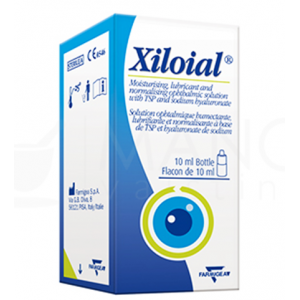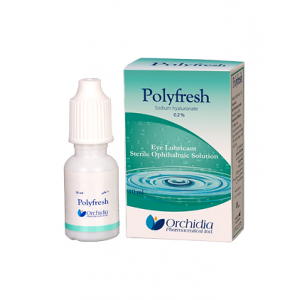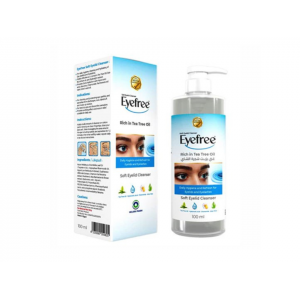- Anti-hestaminic & Respiratory Drugs (20)
- Anti-inflammatory Drugs (192) +-
- Baby & Mom (1286) +-
- Baby & Mom > Bath, skin & Hair > Skin Care > wibes (52)
- Beauty (2770) +-
- Beauty > Skin Care > whitening (274)
- Chemotherapy & Immune Response (865) +-
- Chemotherapy & Immune Response > ANTI-FUNGAL (11)
- Chemotherapy & Immune Response > Chemotherapeutic Agents > Hormone Antagonists >Enzyme Inhibitors (284)
- CIRCULATORY DISTURBANCE AGENTS (23)
- Diet & Fitness Products (275) +-
- DRUG AFFECTING CENTRAL NERVOUS SYSTEM (191)
- HEMATOLOGY (39)
-
Medical Supplies (496)
+-
- Chemicals & Disinfectants (19)
- Dental Supplies (26)
- Devices & Instruments (10)
- Diabetic Supplies (119)
- General Medical Supplies (21)
- I.V & Medical Solution (0)
- Intensive Care Unit & Anesthesia Supplies (0)
- KIDNEY UNIT SUPPLIES (21)
- Lab Supplies (3)
- Miscellaneous (21)
- Neonatal Unit Supplies (0)
- Operation Room Supplies (2)
- Sanitary (5)
- Sterilization Supplies (0)
- Surgical Sutures (4)
- Syringes (3)
-
Medicines & Health (2547)
+-
- Allergy & Sinus (94)
- Children's Health Care (51)
- Cough, Cold & Flu (273)
- Digestive Health & Nausea (224)
- Ear, Nose & Throat Care (177)
- Eye Care (116)
- Feminine Care (319)
- Foot Care (4)
- Orthopaedic Appliances (0)
- Pain Relief & Management (233)
- Pill Organizer (2)
- Skin Treatments (752)
- Sleep & Snoring Aids (2)
- Support & Braces (6)
- Medicines & health > Gout releif (42)
- Natural & Organic Products (83) +-
- OTC > Analgesics > Anti-inflammatory Drugs (44)
-
Personal Care (3096)
+-
- Bath & Body (256)
- Deodorant & Anti-perspirants (180)
- Ear, Nose & Throat Care (173)
- Eye Care (122)
- Feminine Care (368)
- Foot Care (12)
- Hair Care (417)
- Home Tests & Monitorings (14)
- Incontinence (7)
- Lip Care (22)
- Massage & Relaxation (17)
- Natural & Organic Personal Care (7)
- Oral Care (83)
- Pregnancy & Fertility (64)
- Shaving & Grooming (65)
- Sun Care (68)
-
Prescription Drugs (2833)
+-
- Analgesics (181)
- Cardiovascular System (370)
- Drugs Affecting Musculoskeletal System (65)
- Drugs Used In Infections (55)
- Ear & Nose Drugs (2)
- Endocrine System (173)
- Gastrointestinal Tract (240)
- Gastrointestinal Tract > Hepatology > Liver treatment (61)
- GYNECOLOGY (2)
- Miscellaneous (11)
- NEPHROLOGY > URINARY SYSTEM > RENAL DISORDERS > URINARY TRACT DISORDERS (46)
- NEUROLOGY (220)
- Nutrients & Blood Electrolytes (2)
- Respiratory System (150)
- SKIN > NAILS > HAIR > TOPICAL PREPARATIONS (51)
- Vaccines (1)
- Prescription drugs > Cardiovascular system > Anti-hypertension drugs (239)
- Sexual Wellness (296) +-
- Vitamins & Minerals Supplements (1180) +-
Ex Tax: 19EGP
Example
You can return the product within 14 days of purchase.
ReturnsYou can return the product within 14 days of purchase.

Composition
Each 1 ml or 1 g contains:
Dexamethasone .................................................................................... 1 mg
Neomycin (as sulphate) ..................................................................... 3.5 mg
Polymyxin B sulphate .................................................................. 6000 Units
Inactive ingredients:
Dexatrol Ophthalmic & Otic Suspension:
Hydroxypropyl methylcellulose, benzalkonium chloride 10 % solution, disodium edentate, sodium chloride, polysorbate 80, sodium hydroxide or hydrochloric acid, water for injection.
Dexatrol Ophthalmic Ointment:
Anhydrous lanolin, chlorobutanol, yellow soft paraffin.
Therapeutic Indications
DEXATROL is indicated for the short-term treatment of steroid responsive conditions of the eye when prophylactic antibiotic treatment is also required, after excluding the presence of fungal and viral disease.
DEXATROL is indicated for infections of the external ear canal caused by susceptible organisms; mastoidectomy cavity infections or chronic suppurative otitis media.
Dosage and Administration
Children and Adults (including the Elderly):
Ophthalmic Use:
Apply 1-2 drops to each affected eye up to 6 times daily or, more frequently if required.
Otic Use:
In External Ear Canal Infection:
Before administration, the external ear should be thoroughly cleaned.
Apply 4 drops 3-4 times daily.
Topical to Mastoidectomy cavity or Ear canal: Apply 4-10 drops 3-4 times daily.
Dexatrol Ophthalmic Ointment: Apply a small amount into the conjunctival sac(s) up to 3-4 times daily or, may be used adjunctively with drops at bedtime.
Contraindications
Hypersensitivity to the active substances or to any component of the preparation.
Epithelial Herpes Simplex keratitis.
Vaccinia, varicella, or other viral infection of cornea and conjunctiva (except Herpes Zoster keratitis).
Fungal diseases of ocular structures.
Mycobacterial ocular infections.
Warnings and Precautions
For topical use only. Not for injection or ingestion.
As with all antibacterial preparations, prolonged use may lead to overgrowth of non-susceptible bacterial strains or fungi. If superinfection occurs, appropriate therapy should be initiated.
Sensitivity to topically-applied aminoglycosides may occur in some patients. Cross-sensitivity to other aminoglycosides may also occur. If signs of serious reactions or hypersensitivity occur, discontinue use of DEXATROL.
Patients using ophthalmic preparations containing neomycin sulphate should be advised to consult a physician if ocular pain, redness, swelling, or irritation worsens or persists.
Serious adverse reactions including neurotoxicity, ototoxicity and nephrotoxicity have occurred in patients receiving systemic neomycin or when applied topically to open wounds or damaged skin. Nephrotoxic and neurotoxic reactions have also occurred with systemic polymyxin B. Although these effects have not been reported following topical ocular use of this product, caution is advised when used concomitantly with systemic aminoglycoside or polymyxin B therapy.
Prolonged use of ophthalmic steroids may result in ocular hypertension and/or glaucoma, with damage to the optic nerve, reduced visual acuity and visual field defects, and posterior subcapsular cataract formation. In patients receiving prolonged ophthalmic corticosteroid therapy, intraocular pressure should be checked routinely and frequently.
In those diseases causing thinning of the cornea or sclera, perforations have been known to occur with the use of topical corticosteroids.
Corticosteroids may reduce resistance to and aid in the establishment of bacterial, viral, or fungal infections and mask the clinical signs of infection, preventing recognition of ineffectiveness of the antibiotic, or may suppress hypersensitivity reactions to substances in the product. Fungal infection should be suspected in patients with persistent corneal ulceration who have been or are receiving these drugs and corticosteroid therapy should be discontinued if fungal infection occurs.
To avoid the risk of enhancement of herpetic corneal disease, frequent slit lamp examination is essential.
Contact lens wear is not recommended during treatment of an ocular infection. Therefore patients should be advised not to wear contact lenses during treatment with DEXATROL.
DEXATROL ophthalmic suspension contains benzalkonium chloride as a preservative which may cause eye irritation and is known to discolour soft contact lenses. Avoid contact with soft contact lenses. Remove contact lenses prior to application and wait at least 15 minutes before reinsertion.
Special Precautions for Disposal and Other Handling:
Do not touch the tip of the bottle or the tube to any surface as this may contaminate the contents.
Drug Interactions
No interaction studies have been performed.
Concomitant and/or sequential use of an aminoglycoside (neomycin) and other systemic, oral, or topical drugs that have neurotoxic, ototoxic, or nephrotoxic effects may result in additive toxicity and should be avoided, whenever possible.
If more than one ophthalmic medicinal product is being used, the medicines must be administered at least 5 minutes apart.
Pregnancy and Lactation
Pregnancy:
There are no or limited amount of data from the use of the components of DEXATROL (Dexamethasone, neomycin (as sulphate) and Polymyxin B sulphate) in pregnant women. Studies in animals with some active components of DEXATROL have shown reproductive toxicity.
DEXATROL is not recommended during pregnancy.
Lactation:
It is unknown whether topical ophthalmic dexamethasone, neomycin or polymyxin B are excreted in human. Because systemic corticosteroids and aminoglycosides may be distributed into milk, a risk to the suckling child cannot be excluded.
A decision must be made whether to discontinue breast-feeding or to discontinue therapy with DEXATROL taking into account the benefit of breast-feeding for the child and the benefit of the product to the woman.
Effects on ability to drive and to use machines
DEXATROL has no or negligible influence on the ability to drive and use machines. As with any other eye drop, temporarily blurred vision or other visual disturbances may affect the ability to drive or use machines. If transient blurred vision occurs upon instillation, the patient must wait until the vision clears before driving or using machinery.
Undesirable Effects
The following adverse effects are classified according to the following convention: Very common (≥ 1/10); Common (≥ 1/100 to <1/10); Uncommon (≥ 1/1,000 to <1/100); Rare (≥ 1/10,000 to <1/1000); Very rare (< 1/10,000) or not known (cannot be estimated from the available data). Within each frequency grouping, undesirable effects are presented in decreasing order of seriousness.
Immune system disorders:
Not known: hypersensitivity (systemic or ocular).
Nervous system disorders:
Not known: headache.
Eye disorders:
Uncommon: keratitis, increased intraocular pressure, eye irritation, eye pruritus, ocular discomfort.
Not known: corneal thinning, photophobia, blurred vision, mydriasis, eye pain, eye swelling, ptosis, foreign body sensation in eyes, increased lacrimation, ocular hyperaemia.
Description of selected adverse events:
Due to the steroid component, in diseases causing thinning of the cornea or sclera there is a higher risk for perforation especially after long treatments (see Warnings and Precautions).
Topical ophthalmic steroid use may result in increased intraocular pressure with damage to the optic nerve, reduced visual acuity and visual field defects. Also it may lead to posterior subcapsular cataract formation (see Warnings and Precautions).
Sensitivity to topically-administered aminoglycosides may occur in some patients (see Warnings and Precautions). Systemic side effects may occur with extensive use.
Overdose
No case of overdose has been reported.
Signs and symptoms of an overdosage of DEXATROL may be similar to adverse reaction effects seen in some patients (punctuate keratitis, erythema, increased lacrimation, oedema and lid itching).
A topical ophthalmic overdose of DEXATROL may be flushed from the eye(s) with lukewarm water.
Pharmacological Properties
Pharmacodynamic properties:
Pharmacotherapeutic group: Ophthalmologicals; Anti-infectives.
Mechanism of Action:
DEXATROL has a dual effect: suppression of inflammation symptoms by the corticosteroidal component dexamethasone, and an anti-infective effect due to the presence of two antibiotics, polymyxin B and neomycin.
Dexamethasone is a synthetic glucocorticoid with potent anti-inflammatory activity. Polymyxin B is a cyclic lipopeptide that penetrates the cell wall of gram-negative bacilli to destabilize the cytoplasmic membrane. It is generally less active against gram-positive bacteria. Neomycin is an aminoglycoside antibiotic that primarily exerts its effect on bacterial cells by inhibiting polypeptide assembly and synthesis on the ribosome.
Mechanism of Resistance:
Resistance of bacteria to polymyxin B is of chromosomal origin and is uncommon. A modification of the phospholipids of the cytoplasmic membrane appears to play a role.
Resistance to neomycin occurs by several different mechanisms including (1) alterations of the ribosomal subunit within the bacterial cell; (2) interference with the transport of neomycin into the cell, and (3) inactivation by an array of adenylating, phosphorylating, and acetylating enzymes. Genetic information for production of inactivating enzymes may be carried on the bacterial chromosome or on plasmids.
Breakpoints:
Each gram of DEXATROL contains 6000 IU polymyxin B sulphate and 3500 IU neomycin sulphate.
The breakpoints and the in-vitro spectrum as mentioned below are based on the dual activity of either polymyxin B or neomycin. The breakpoints listed here are based upon acquired resistance for specific species found in ocular infections and the ratio in International Units of polymyxin B to neomycin in DEXATROL:
Resistance breakpoints: > 5:2.5 to > 40:20 depending upon the bacterial species.
Susceptibility:
The information listed below provides guidance on the approximate probabilities on the susceptibility of microorganisms to polymyxin B or neomycin in DEXATROL. The presentation below lists bacterial species recovered from external ocular infections of the eye.
The prevalence of acquired resistance may vary geographically and with time for selected species and local information on resistance is desirable, particularly when treating severe infections. As necessary, expert advice should be sought when the local prevalence of resistance is such that the utility of the combination of polymyxin B or neomycin as in DEXATROL in at least some types of infections is questionable.
Commonly Susceptible Species:
Aerobic Gram-positive Microorganisms:
Bacillus cereus, Bacillus megaterium, Bacillus pumilus, Bacillus simplex, Corynebacterium accolens, Corynebacterium bovis, Corynebacterium macginleyi, Corynebacterium propinquum, Corynebacterium pseudodiphtheriticum, Staphylococcus aureus (methicillin susceptible - MSSA), Staphylococcus capitis, Staphylococcus epidermidis (methicillin susceptible - MSSE), Staphylococcus pasteuri, Staphylococcus warneri, Streptococcus mutans.
Aerobic Gram-negative Microorganisms:
Haemophilus influenzae, Klebsiella pneumoniae, Moraxella catarrhalis, Moraxella lacunata, Pseudomonas aeruginosa, Serratia species.
Species for which acquired resistance might be a problem:
Staphylococcus epidermidis (methicillin resistant - MRSE), Staphylococcus hominis, Staphylococcus lugdunensis.
Inherently resistant organisms:
Aerobic Gram-positive Microorganisms:
Enterococci faecalis, Staphylococcus aureus (methicillin resistant - MRSA), Streptococcus mitis, Streptococcus pneumoniae.
Anaerobic Bacteria:
Propionibacterium acnes.
Dexamethasone is a moderately powerful corticosteroid having good penetration in ocular tissue. Corticosteroids have an anti-inflammatory as well as a vasoconstrictive effect. They suppress the inflammatory response and symptoms in various disorders without basically curing these disorders.
Pharmacokinetic properties:
Dexamethasone, like other corticosteroids, is absorbed rapidly after oral administration and has a biological half-life of about 190 minutes. Sufficient absorption may occur after topical application to the skin and eye to produce systemic effects. Intraocular penetration of dexamethasone occurs in significant amounts and contributes to the effectiveness of dexamethasone in anterior segment inflammatory disease.
Polymyxin B sulphate is not absorbed from the gastrointestinal tract or through intact skin, although the intact corneal epithelium prevents penetration into the corneal stroma, therapeutic concentrations do enter the stroma after epithelial damage. Good stromal penetration occurs after epithelial abrasion following topical instillation, subconjunctival injection, or corneal bath. No significant polymyxin B penetration into the vitreous is demonstrable after parenteral or local administration of the drug. Neomycin is poorly absorbed from the gastrointestinal tract and after topical administration an insufficient amount is absorbed to produce systemic effects. Absorption has been reported to occur from wounds and inflamed skin. After absorption neomycin is rapidly excreted by the kidneys in active form.
Storage
Store at a temperature not exceeding 30°C & after opening to be used within 28 days at room temperature.
Keep away from direct sunlight.
Do not refrigerate.
Keep the container tightly closed.
Packaging
Dexatrol Ophthalmic & Otic Suspension: 5 ml Plastic dropper bottle.
Dexatrol Ophthalmic Ointment: Ophthalmic tube of 5 g.
Write a review
Your Name:Your Review: Note: HTML is not translated!
Rating: Bad Good
Enter the code in the box below:



















